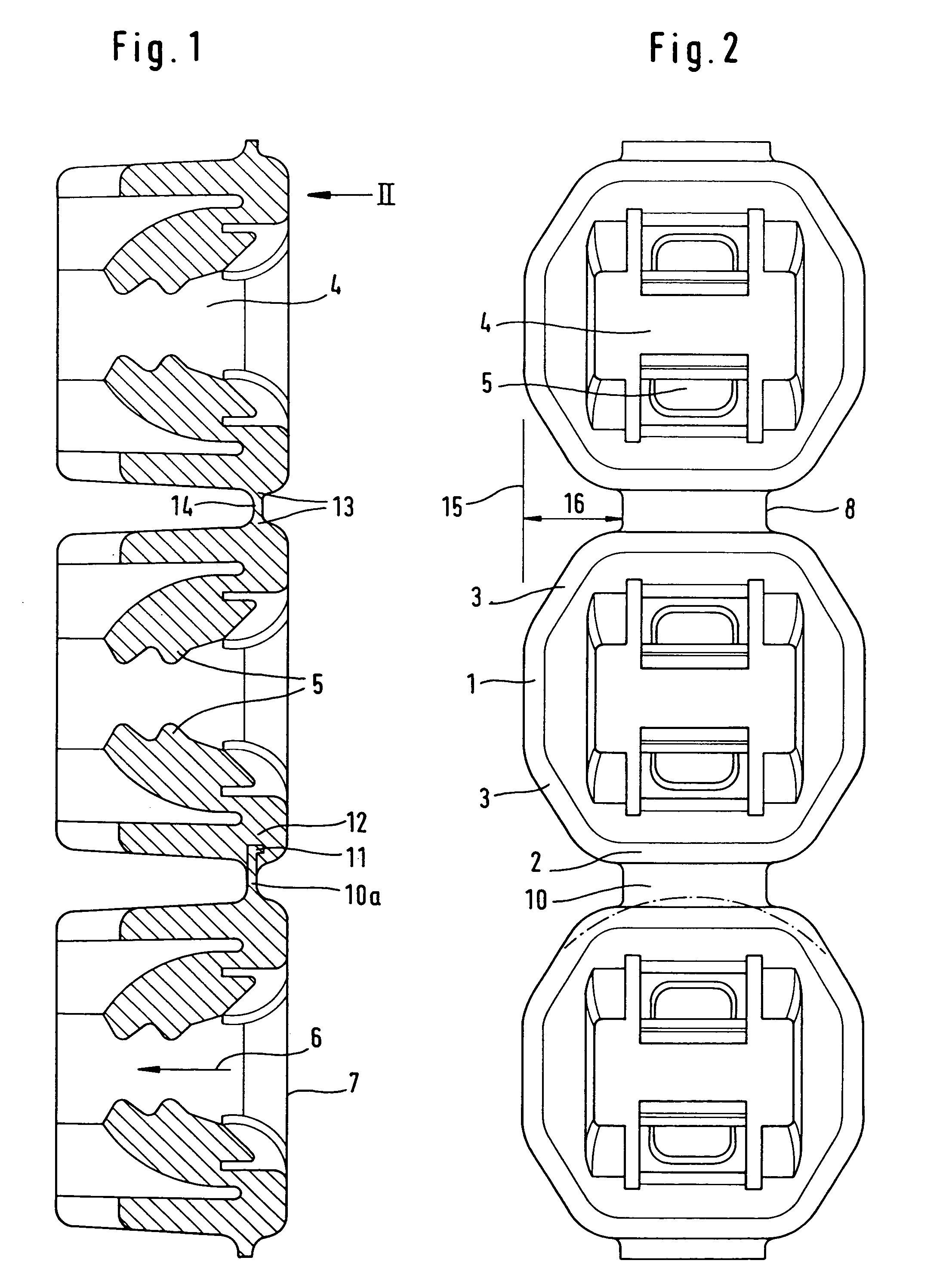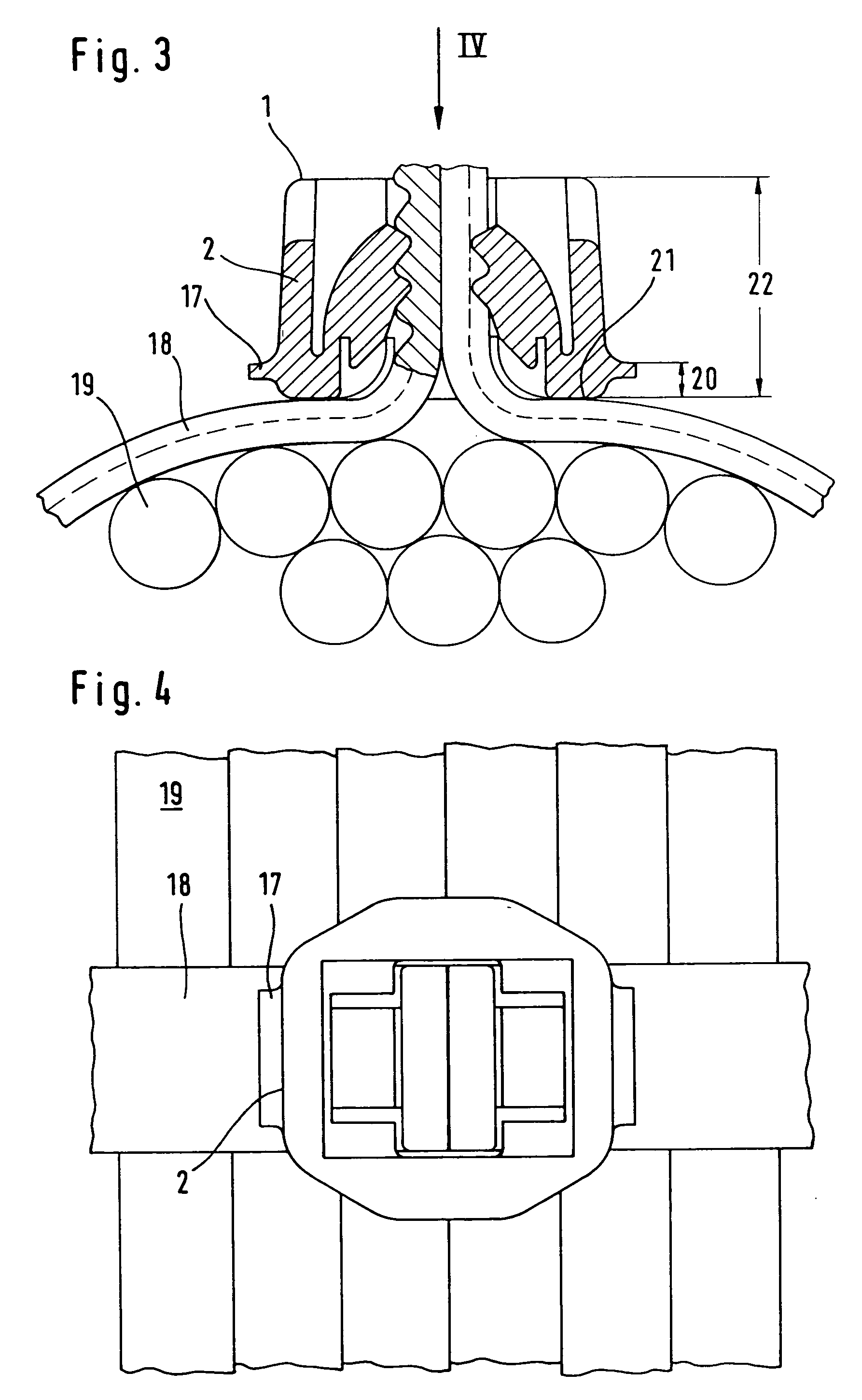Magazine strip for ratchets
- Summary
- Abstract
- Description
- Claims
- Application Information
AI Technical Summary
Benefits of technology
Problems solved by technology
Method used
Image
Examples
Embodiment Construction
[0020]Each of the ratchets, which are shown greatly enlarged in the representation, comprises an encircling wall which is composed of wall sections 1 parallel to the direction of the magazine strip, wall sections 2 running perpendicularly to this direction, and obliquely running transition sections 3. It contains a through-opening 4 for the ties to be bound and locking pawls 5 which interact with a tooth system of these ties. The locking pawls 5 are arranged in such a way that they allow the toothed ties to enter the ratchet in arrow direction “6”, but lock in the opposite direction. The side 7 of the ratchets is therefore referred to as tie entry side.
[0021]Adjacent ties of the magazine strip are connected to one another by webs 10. The latter are mostly made in one piece with both adjacent ratchets. However, depending on the type of production, they may also be connected in a positive-locking manner to at least one of the two ratchets. This is shown at the web 10a, the thickened, ...
PUM
| Property | Measurement | Unit |
|---|---|---|
| Length | aaaaa | aaaaa |
| Mass | aaaaa | aaaaa |
| Mass | aaaaa | aaaaa |
Abstract
Description
Claims
Application Information
 Login to View More
Login to View More - R&D
- Intellectual Property
- Life Sciences
- Materials
- Tech Scout
- Unparalleled Data Quality
- Higher Quality Content
- 60% Fewer Hallucinations
Browse by: Latest US Patents, China's latest patents, Technical Efficacy Thesaurus, Application Domain, Technology Topic, Popular Technical Reports.
© 2025 PatSnap. All rights reserved.Legal|Privacy policy|Modern Slavery Act Transparency Statement|Sitemap|About US| Contact US: help@patsnap.com



